During this week German forces completed their invasion of the Channel Islands and Hitler ordered plans for the 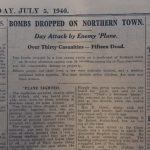 invasion of Britain to be drawn up, code-named Operation Sea Lion. The French Government relocated to Vichy from where it governed south-east France, while German forces occupied the rest of the country. On 4 July the Royal Navy sank the French fleet at Mers-el-Kébir off Algeria, with the loss of 1,297 French servicemen, to prevent it falling into German hands.
invasion of Britain to be drawn up, code-named Operation Sea Lion. The French Government relocated to Vichy from where it governed south-east France, while German forces occupied the rest of the country. On 4 July the Royal Navy sank the French fleet at Mers-el-Kébir off Algeria, with the loss of 1,297 French servicemen, to prevent it falling into German hands.
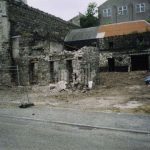 On 1 July Wick suffered the first daytime bombing raid of the war on mainland Britain. The weather had been fine all day, dry but with low cloud and, because of the school holidays, children were out playing in the streets. It was about 4.30 p.m., nearly teatime, when a lone German aircraft emerged from the cloud and dropped two 100lb bombs on Bank Row in Pulteneytown down by the harbour before flying off. The bombs fell so close together that some people thought only one had fallen.
On 1 July Wick suffered the first daytime bombing raid of the war on mainland Britain. The weather had been fine all day, dry but with low cloud and, because of the school holidays, children were out playing in the streets. It was about 4.30 p.m., nearly teatime, when a lone German aircraft emerged from the cloud and dropped two 100lb bombs on Bank Row in Pulteneytown down by the harbour before flying off. The bombs fell so close together that some people thought only one had fallen.
Coming as it did out of the cloud the plane had not been sighted, and no air raid siren had sounded to warn people 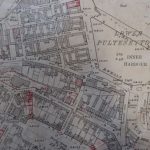 off the streets. As a result, fifteen people lost their lives in the explosion, eight of them children.
off the streets. As a result, fifteen people lost their lives in the explosion, eight of them children.
The John o’Groat Journal of 5 July printed a detailed report of the bombing and its aftermath, together with eyewitness accounts. A transcript of the report can be found by clicking on http://www.highlandarchives.org.uk/caithness-at-war.asp?id=46 or using the menu on the right had side of this page click on the page entitled ‘Week 44, 5th July John O’Groat Journal Newspaper Transcript’.
The full roll call of the dead is as follows:
Frederick Blackstock, aged 5
Isobel Bruce, aged 7
James Bruce Flett, aged 7
Kenneth MacGregor, aged 8
Amelia Miller, aged 9
Elizabeth Miller, aged 5
Donald Thomson, aged 16
John Wares, aged 5
Isobel Mackenzie, aged 25
Robert Mackenzie, aged 71
Pte. Robert Mackenzie, aged 30
Mary MacTavish, aged 44
William Smith, aged 63
Mary Steven, aged 45
Donald Waters, aged 50
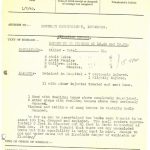 The German plane had probably dropped its bombs intending to hit the nearby harbour and
The German plane had probably dropped its bombs intending to hit the nearby harbour and 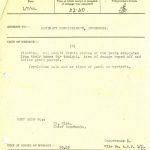 its defences. The police situation report stated that one shop had been completely demolished, and five others very seriously damaged. Everyone within a vicinity of 200 yards was evacuated and a police guard posted.
its defences. The police situation report stated that one shop had been completely demolished, and five others very seriously damaged. Everyone within a vicinity of 200 yards was evacuated and a police guard posted.
The site of the bombing is now a memorial garden, with the names of the victims, and those of a later raid in October 1940, inscribed on a stone wall.
In 1989 Hillhead Primary School did an oral history project, collecting memories of survivors of the event. Their stories can be found here: http://www.caithness.org/history/bankrowbombing/bankrowbombing.htm
In 2003 Jenny Alderson, sister of John Wares who was killed in the explosion, contributed to the BBC’s “WW2 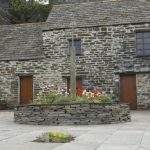 People’s War” project, remembering playing outside that day and being injured, and the aftermath: http://www.bbc.co.uk/history/ww2peopleswar/stories/19/a2032219.shtml
People’s War” project, remembering playing outside that day and being injured, and the aftermath: http://www.bbc.co.uk/history/ww2peopleswar/stories/19/a2032219.shtml
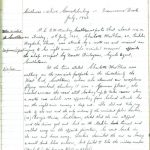 Suddenly any plane was a potential threat. On Friday 5 July at 11.00am, Charlotte MacPhee, aged 62, a “tinkler” [i.e., tinker] from Weydale, Thurso, was walking on the footpath opposite Donald Finlayson’s cycle shop in Castletown. She observed an aeroplane flying overhead and, “thinking it was a German plane, she rushed across the road still looking up to take cover”, only to be struck by a motor car coming up the road. Luckily she only received a cut on the arm, but it shows the change in mood: no one was safe any more.
Suddenly any plane was a potential threat. On Friday 5 July at 11.00am, Charlotte MacPhee, aged 62, a “tinkler” [i.e., tinker] from Weydale, Thurso, was walking on the footpath opposite Donald Finlayson’s cycle shop in Castletown. She observed an aeroplane flying overhead and, “thinking it was a German plane, she rushed across the road still looking up to take cover”, only to be struck by a motor car coming up the road. Luckily she only received a cut on the arm, but it shows the change in mood: no one was safe any more.
